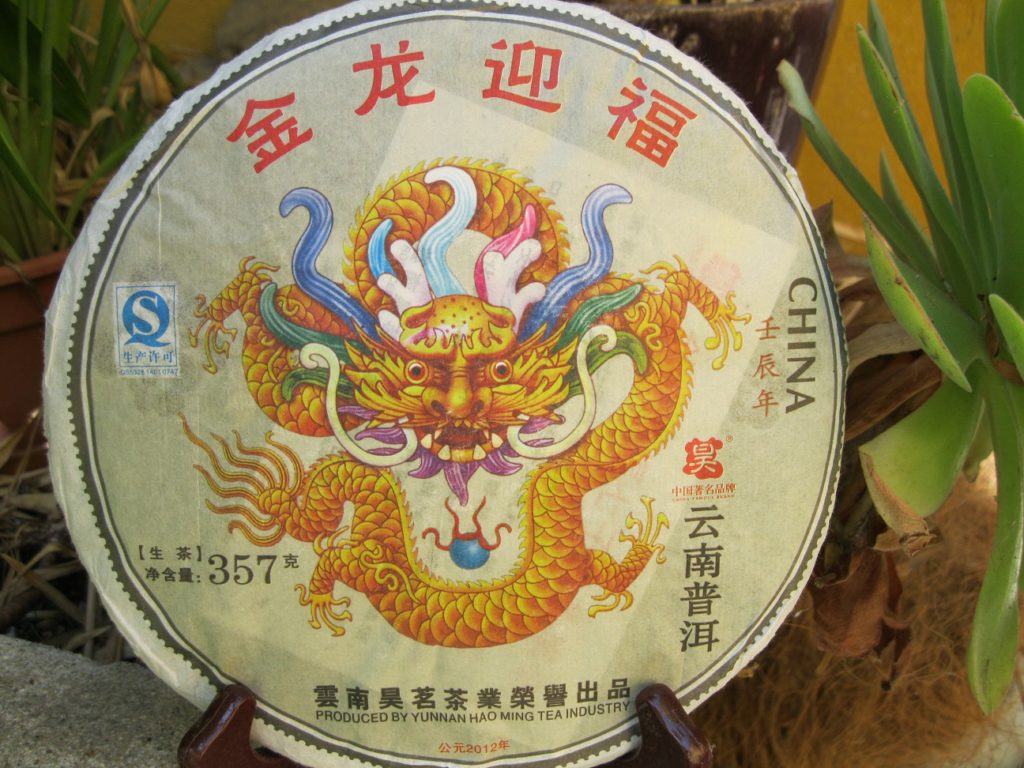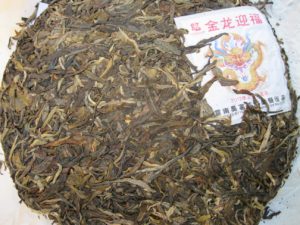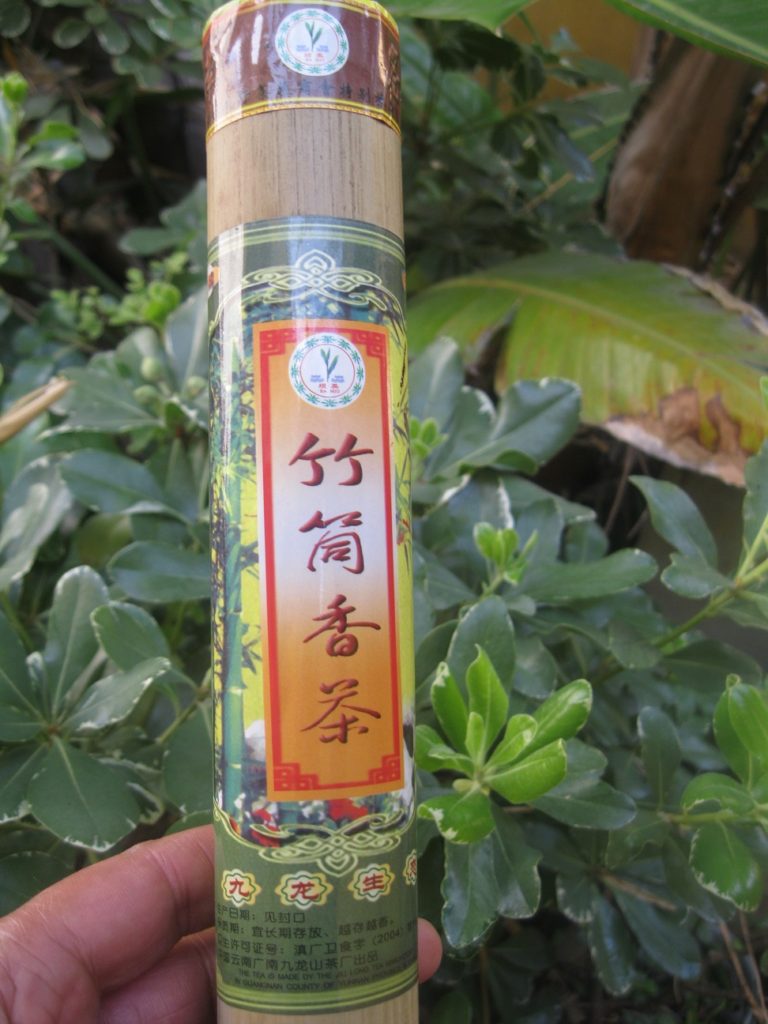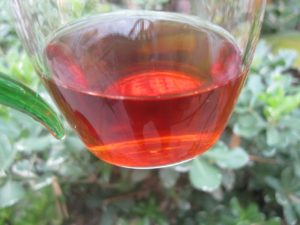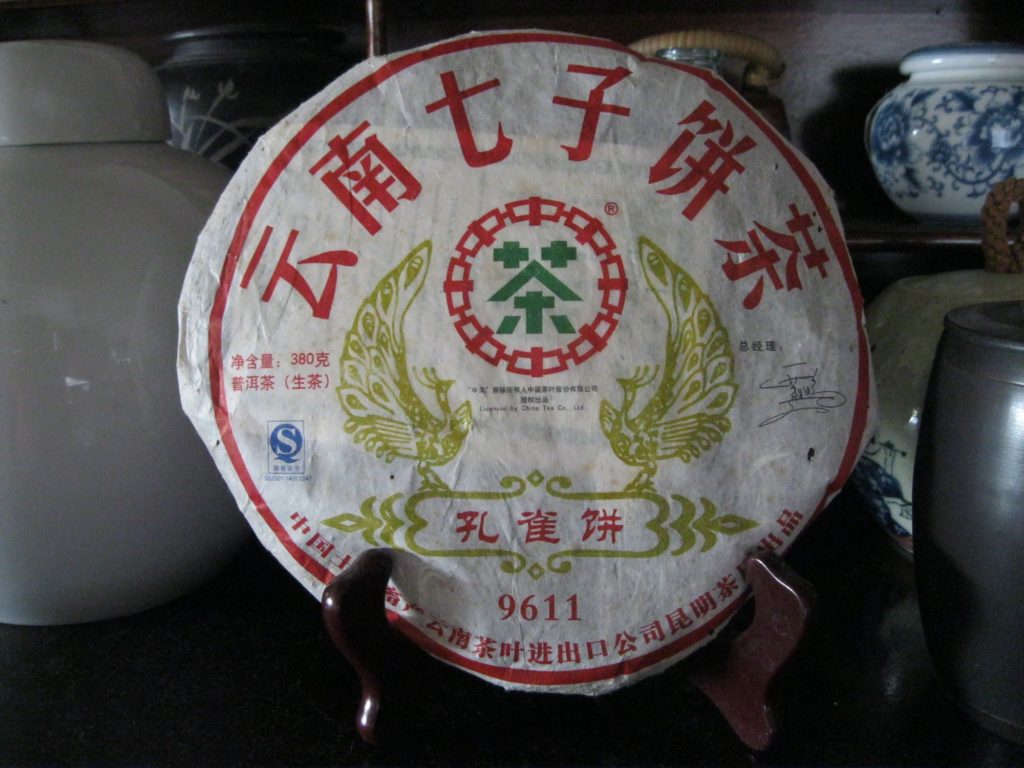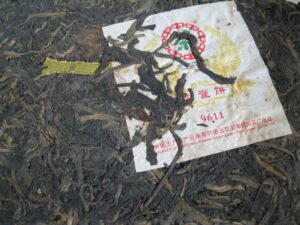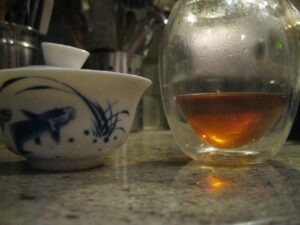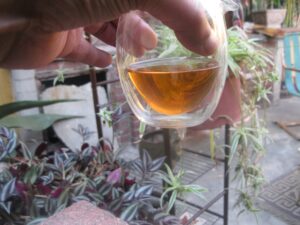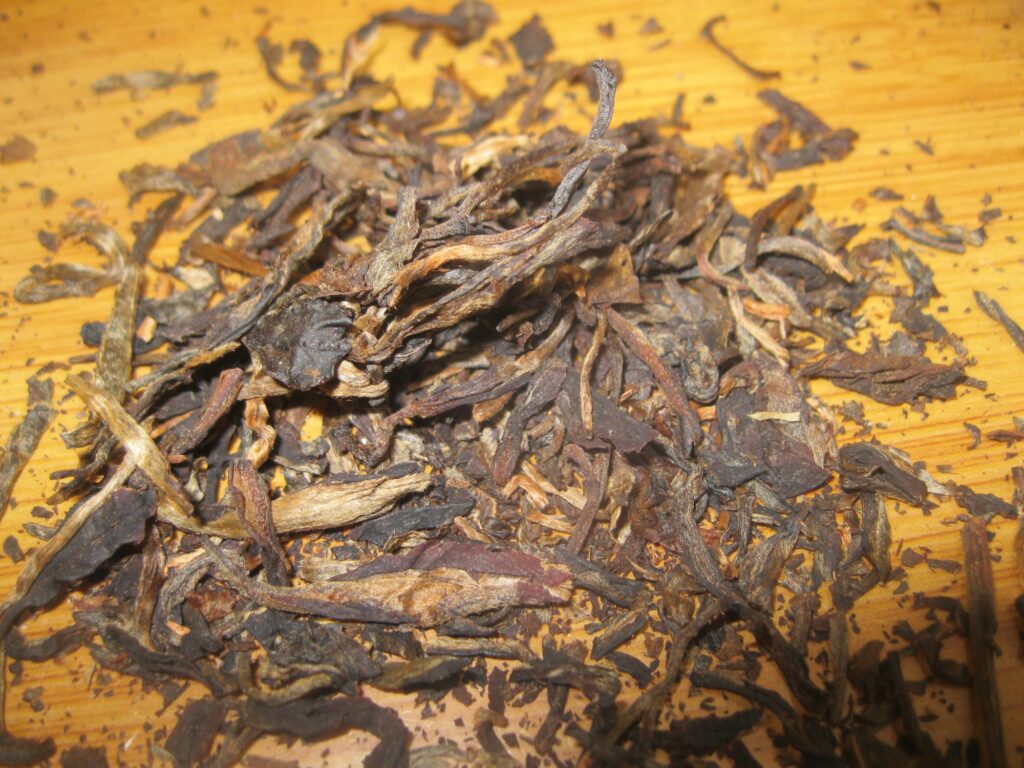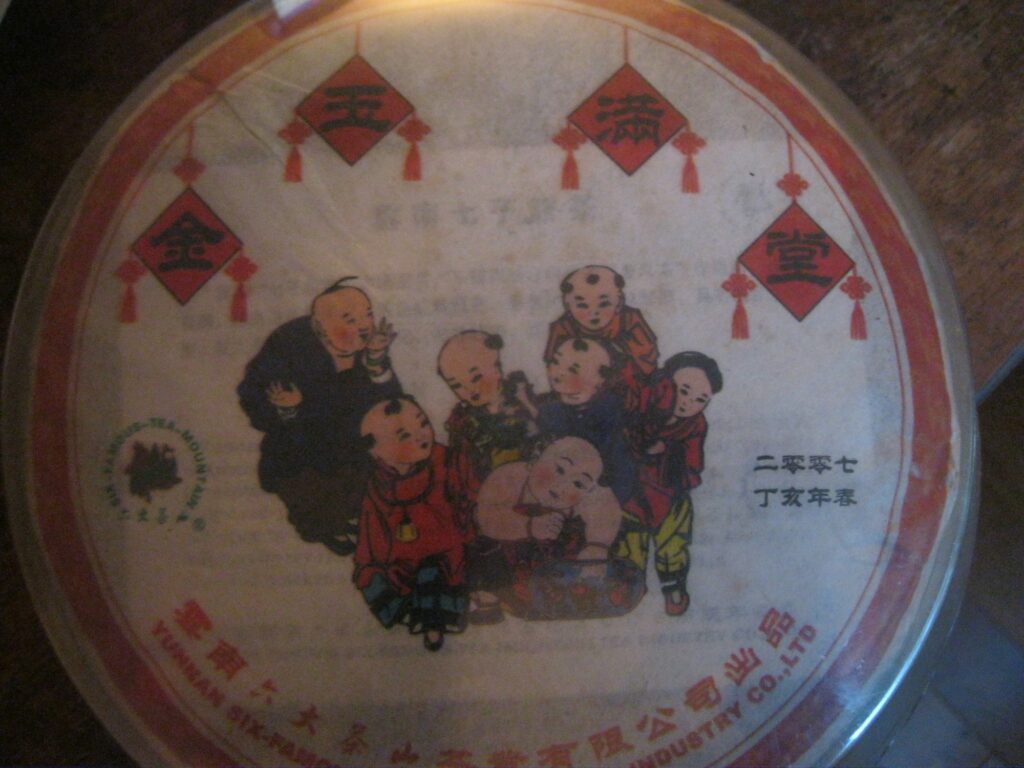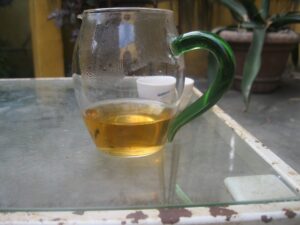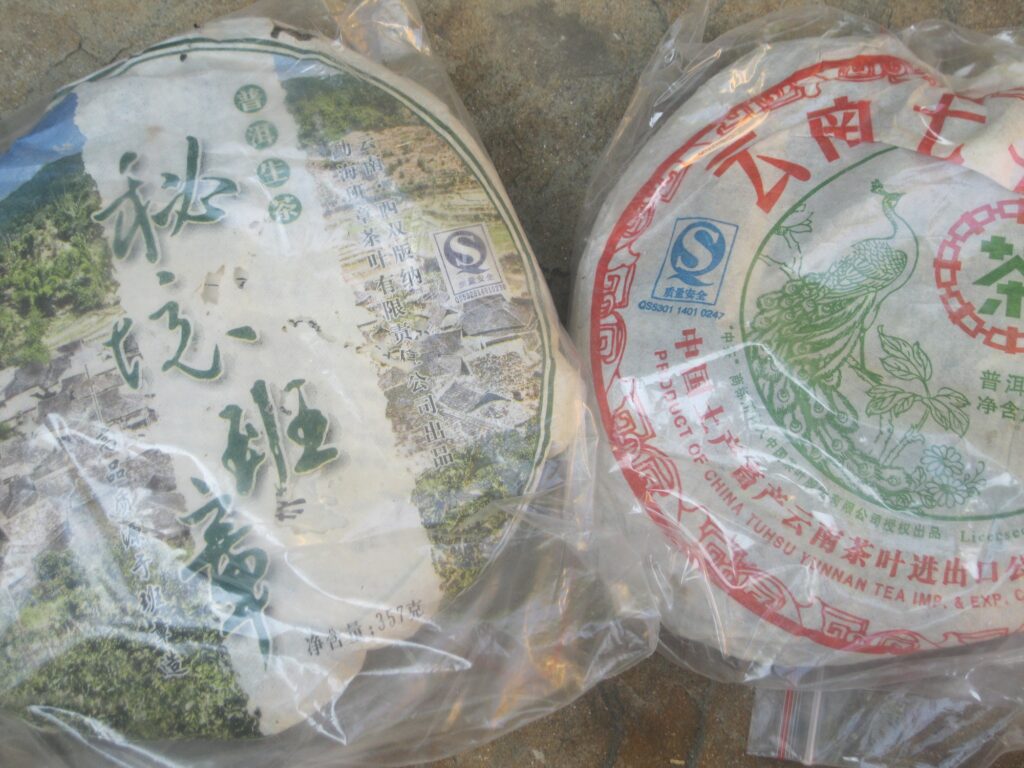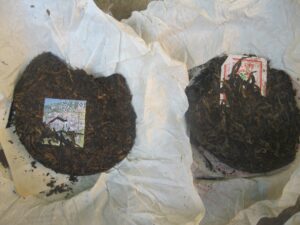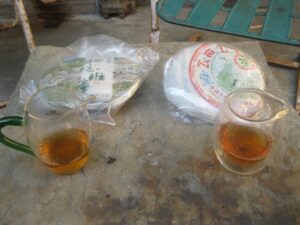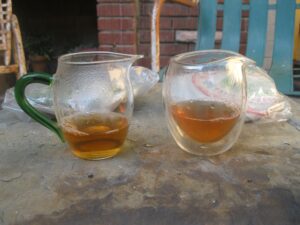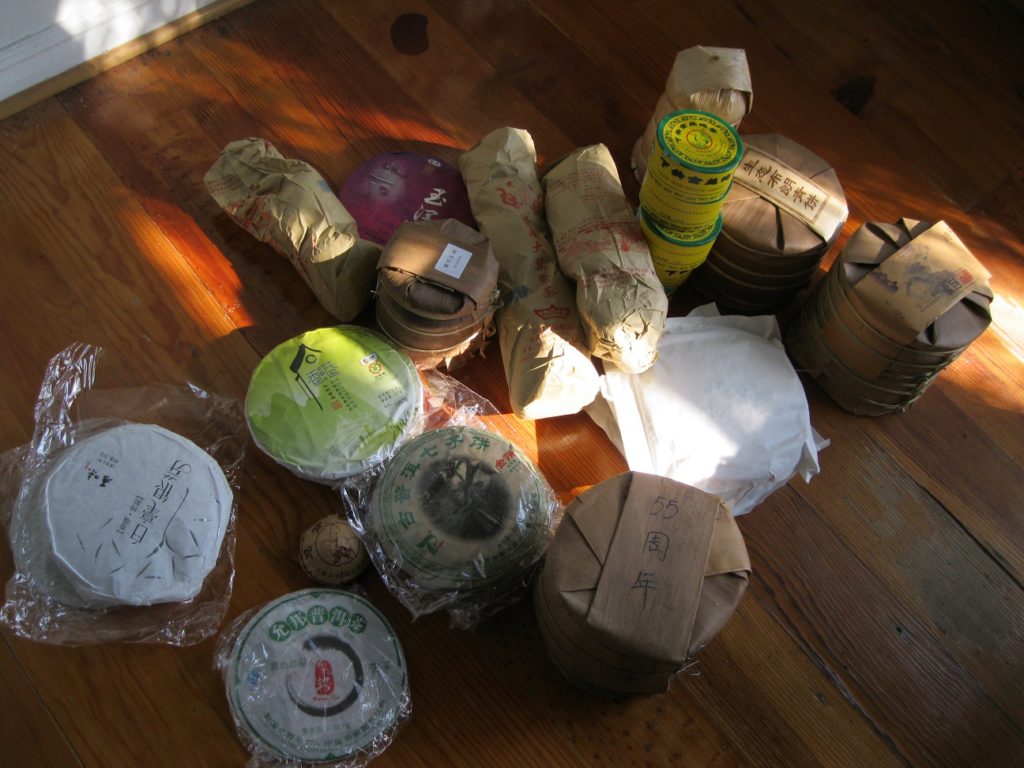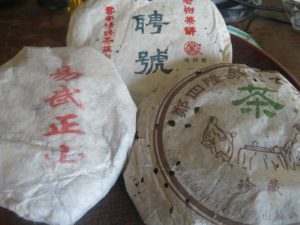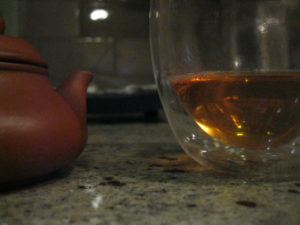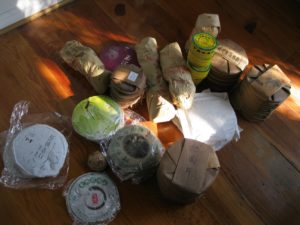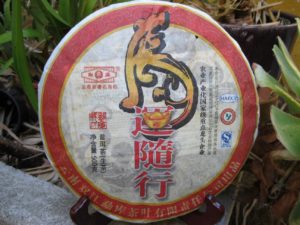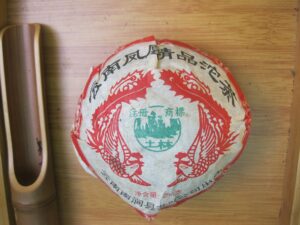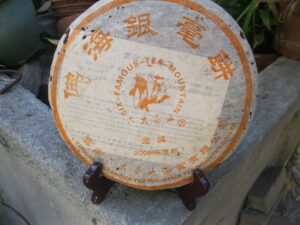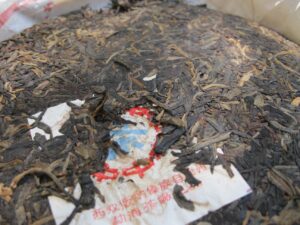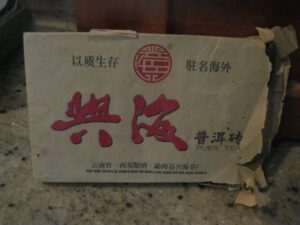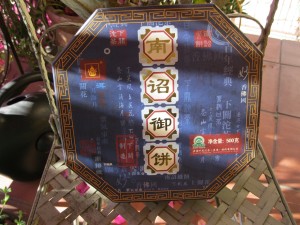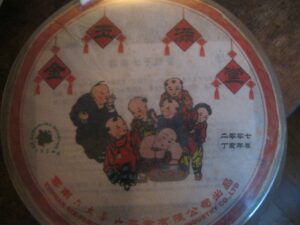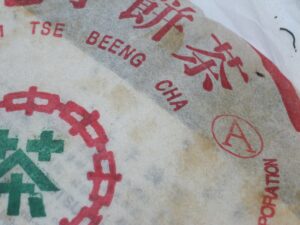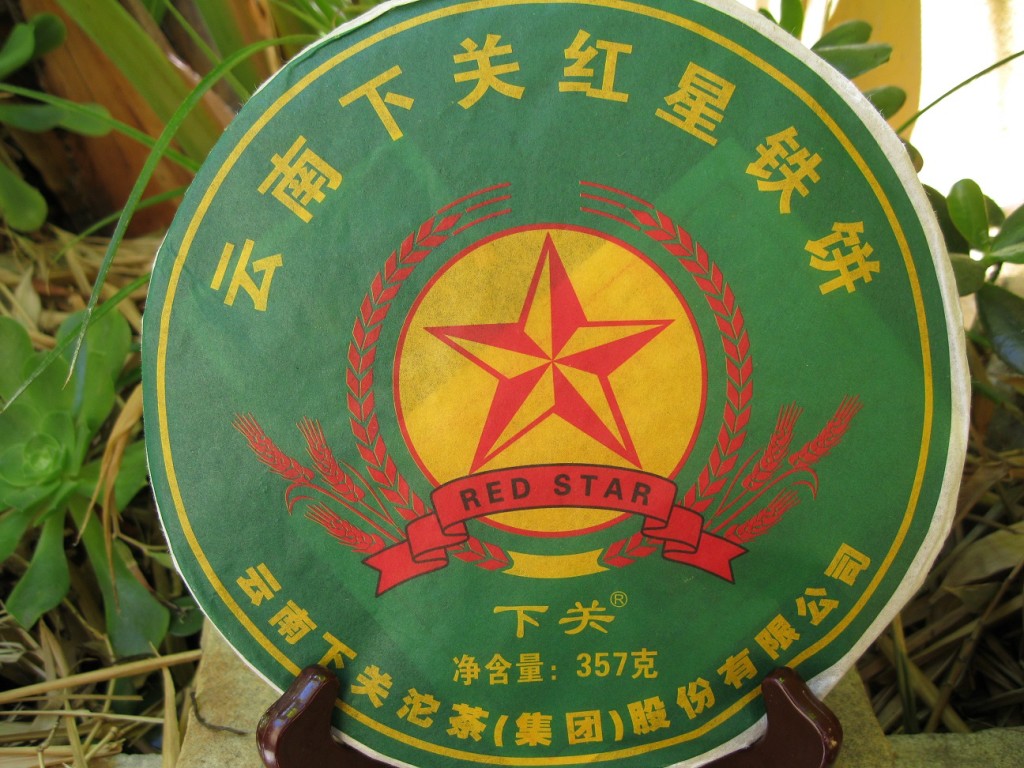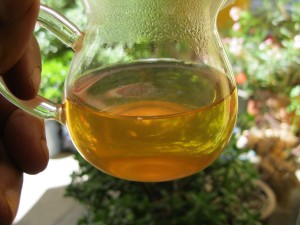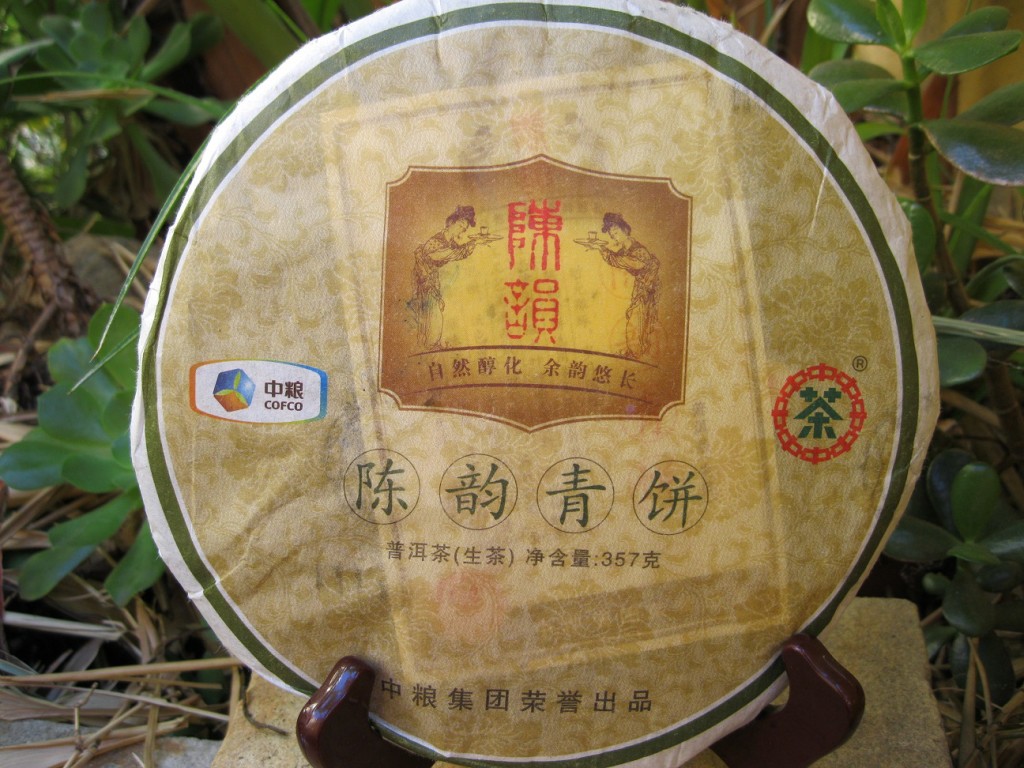Puerh Rating: Dragon, HM
The Puerh Junky Rating System (PJRS) takes on the ’12 Dragon, HM. The “dragon” theme features somewhat more prominently than other lunar creatures. The Dragon features a snazzy wrapper and an even snazzier price. Coincidentally, 2012 was the year of the Golden Dragon, an occasion once every 60 years, so it’s considered particularly lucky.
Without consulting what has been previously written, I remember this raw puerh for being sweet and spicy in the vein of the 7536. It is easily that one could pay three times the price for it just given the complexity and richness.
After three rounds the total was as follows:
- Aroma 10
- Clarity 9
- Sweetness 11
- Viscosity 9
- Astringency 8*
- Huigan 10
- Qi –
The asterisk reflects an earlier working of astringency.
Reflections
This Dragon is extremely pleasant. Vanilla, light spice, a little smoke. Excellent daily drinker that’s sweet and produces lots of saliva. At the time of this sampling, there was zero detectable qi, which greatly affects its final score.
There is no need to over think this raw puerh cake. It is right around average in every category, with well better than average sweetness. Since this assessment was when I was just beginning to work out the PJRS, it’s probably good for another five points.
57/105, C

